Francis Picabia was an avant-garde French painter, poet, and typographer and become associated with Cubism after experimenting with Impressionism and Pointillism.
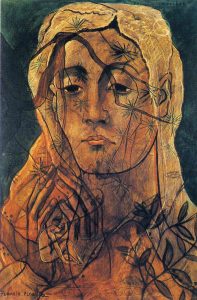
Image source: https://search.creativecommons.org/photos/858c0bac-e0bc-4053-aaaf-0d234c22907f by Cea.
Formerly known as “Papa Dada,” Francis Picabia was a leading figure in the Dada movement in both Paris and New York. A friend and collaborator of Marcel Duchamp, he became known for a rich variety of works ranging from weird, comic-erotic images of machine parts to text-based paintings that foreshadow aspects of Conceptual art.
Early life
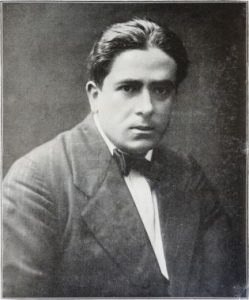
Image source: https://es.wikiquote.org/wiki/Francis_Picabia
Francis Picabia was born in 1879 in Paris, the only child of a Spanish of Cuban origin, Francisco Vicente Martinez Picabia, and a Frenchwoman, Marie Cecile Davanne. Both of his parents came from prominent European families, and Picabia grew up in a wealthy family. Thanks to the family fortune, he was able to study, travel, and enjoy a luxury lifestyle. At the age of seven, his mother died of tuberculosis, followed by the death of his grandmother the following year. Because of these losses Picabia had a lonely childhood and was left in the care of his father, the chancellor to the Cuban Embassy, his uncle, Maurice Davanne, a curator of the Bibliotheque Sainte Geneviève, and his maternal grandfather, Alphonse Davanne, a rich businessman. Their house was known as the house of the quatre sans femmes (four without women).
Proto dada period
In the 1910s, Picabia shared the interests of several artists who emerged in the wake of Cubism who were inspired by how the style could evoke the qualities of the modern, urban, and mechanistic world. Initially, these interests informed his abstract painting, but his attraction to machines would also shape his early Dadaist works, most notably his Mechanomorphs – images of invented machines and machines that were intended as parodies of portraiture. For Picabia, humans were machines, governed by a series of compulsive appetites.
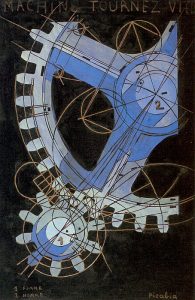
Image source: https://en.wikipedia.org/wiki/Francis_Picabia#/media/File:Picabia_Machine_Turn.jpg
Dada
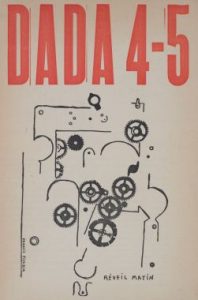
Image source: https://en.wikipedia.org/
Picabia was at the center of the Dada movement when it began to emerge in Paris in the early 1920s, and his work quickly abandoned many of the technical concerns that had animated his previous work. He began to use text in his images and collages and to create more explicitly scandalous images that attack conventional notions of morality, religion, and law. While the work was animated by the Dada movement’s anger against European culture that led to the carnage of World War I, Picabia’s attacks often have the spirited, and vulgar comedy of the court jester. They reflect an artist who does not respect conventions, not even art, as art was just another aspect of the larger culture that he rejected.
Connection to Surrealism
Figurative imagery was central to Picabia’s work from the mid-1920s to the mid-1940s, when he drew inspiration from Spanish subjects, Romanesque and Renaissance sources, images of monsters, and, later, nudes found in soft porn magazines. He initially merged many of these disparate motifs in Transparency’s images, layering them intricately and stacking them on top of each other to cause confusion and strange associations. Transparencies have been described by some critics as occult visions, or Surrealist dream images, although Picabia rejected any association with the Surrealists, he refused to explain their content. These motifs were treated by Picabia with the same playful and anarchic spirit that had animated his Dadaist work.
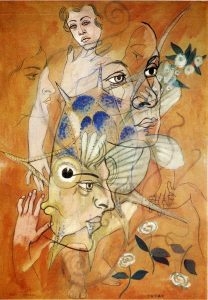
Image source: https://search.creativecommons.org/photos/a4c07e92-52fa-4475-bb43-34495dfd9b32 by Cea.
Info sources:
https://de.phaidon.com/agenda/art/ https://www.theartstory.org/artist/picabia-francis/ https://www.guggenheim.org/artwork/artist/francis-picabia https://en.wikipedia.org/wiki/Francis_Picabia
